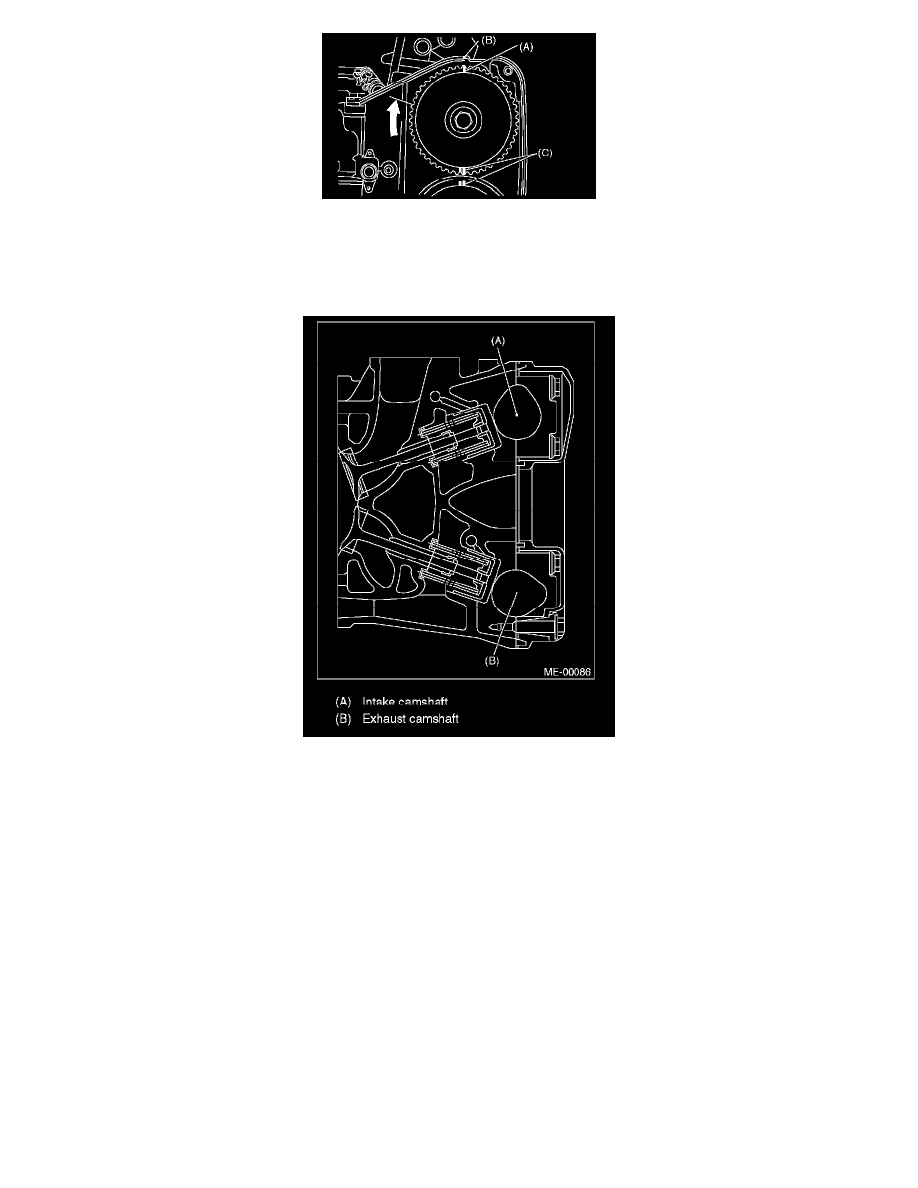9-2X F4-2.0L Turbo (2005)

8. Ensure the camshaft and crank sprockets are positioned properly.
IMPORTANT:
^
Intake and exhaust camshafts for this DOHC engine can be independently rotated with the timing belts removed. As can be seen from the
figure, if the intake and exhaust valves are lifted simultaneously, their heads will interfere with each other, resulting in bent valves.
^
When the timing belts are not installed, four camshafts are held at the "zero-lift" position, where all cams on camshafts do not push the intake and
exhaust valves down. (Under this condition, all valves remain unlifted.)
^
When the camshafts are rotated to install the timing belts, #2 intake and #4 exhaust cam of camshafts (LH) are held to push their corresponding
valves down. (Under this condition, these valves are held lifted.) Camshafts (RH) are held so that their cams do not push valves down.
^
Camshafts (LH) must be rotated from the "zero-lift" position to the position where the timing belt is to be installed at as small an angle as possible,
in order to prevent mutual interference of intake and exhaust valve heads.
^
Do not allow the camshafts to rotate in the direction shown by the upper illustration in the figure as this causes both intake and exhaust valves to
lift simultaneously, resulting in interference with their heads.
